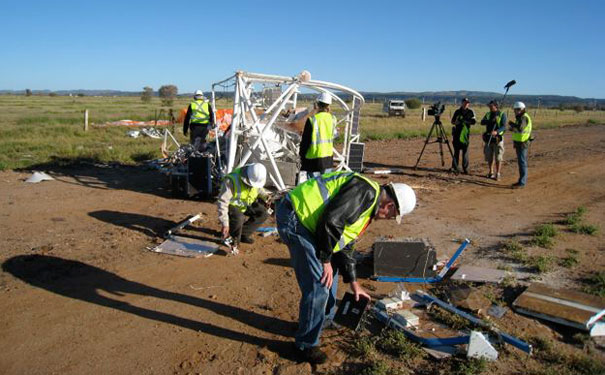
Scientists assess the damage after a NASA balloon crashed in the Northern Territory. Image: NASA
A crash investigation panel has found 25 human errors that led to the crash of a NASA balloon in Alice Springs.
The 120 metre balloon was to take off near Alice Springs airport on the 28th of April when it broke free from the crane holding it in place for the launch. It crashed through the airport’s security fence, narrowly missing the bystanders and knocking over a vehicle, before being dragged along the ground for 100 metres.
The NASA balloon was carrying a $20 million gamma ray telescope, which was partially destroyed in the crash. The Nuclear Compton Telescope was to be used for searching for distant galaxies from the Earth’s upper atmosphere.
Strong winds were initially blamed for the crash, but the NASA’s Mishap Investigation Board determined that the weather conditions had been acceptable for the launch and described the cause as human errors.
The list of “˜bungles’ included shortcomings in personnel training, public safety, government oversight, risk analysis, contingency planning and technical knowledge. The board listed 44 recommendations for future launches, including the need for better communication and a better understanding of potentially unsafe conditions.
All balloon launches were suspended after the incident. NASA will resume launches once new procedures have been implemented to safeguard the public and the launch crews.






